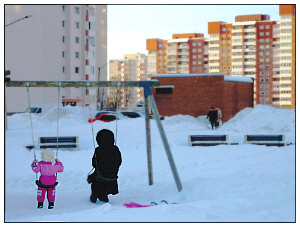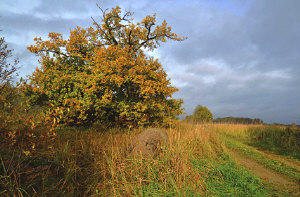Mäetagused vol. 77
Summary
-
Conflict-shy and eloquent silence: Pub as a communication space in Imperial Germany
Armin Owzar
Professor of history Université Sorbonne Nouvelle Paris 3
armin.owzar@sorbonne-nouvelle.fr
Keywords: communication, Imperial Germany, inns, social history, working class
The Wilhelmine society was hit by a huge number of social, political, religious, and ethnic conflicts. How did people deal with these conflicts in their everyday life? The article tries to answer this question by describing the different segments of an urban society (especially Hamburg) and their ways of face-to-face communication in pubs. A qualitative and a quantitative analysis of roughly 20,000 reports of investigation written by the Wilhelmine police, who over 22 years visited the pubs of Hamburg, shows that there was nearly no communication between the different segments of society. If they got into conversation, they normally did not talk about politics or anything else concerning their identity or beliefs. There are different reasons for this behaviour: anthropological reasons such as fear of isolation, and political reasons caused by the ‘Obrigkeitsstaat’. One of the most important reasons is the variety of conflicts in Wilhelmine Germany itself. The social, religious, political, and ethnic problems were increasing alarmingly, so that silence seemed to be the most appropriate and reasonable strategy of managing conflicts.
For the development of Weimar society the results turn out to be ambivalent. On the one hand, this strategy of managing conflicts helped to stabilize the different ‘milieus’ and, as a result, the Weimar Republic. On the other hand, the same behaviour had serious consequences for the disintegration of German society and was responsible for lack of empathy shown towards the members of other ‘milieus’ and ‘lager’.
-

-
From taboo to communication: Doping humour in culture dialogue
Liisi Laineste
Senior Research Fellow Department of Folkloristics, Estonian Literary Museum, Estonia
liisi@folklore.ee
Piret Voolaid
Senior Research Fellow Department of Folkloristics, Estonian Literary Museum, Estonia
piret@folklore.ee
Keywords: Armstrong, cultural-semiotic translation, doping lore, folklore, humour, sports memes, Veerpalu
The Internet affects the adaption and translation of humour through faster dissemination, but also by influencing the content. This influence is especially palpable in languages that recycle – adapt and translate – texts from mostly English-language jokelore and meme pools.
This article gives an overview of humorous memes created in response to taboo and concealment of two doping scandals (Lance Armstrong in 2012, and cross-country skiers in February 2019). The authors compare the two corpora from a global and local perspective in order to pinpoint repeating and diverging patterns and to understand the mechanisms of humour. The two cases serve as an example of the process of cultural translation and express the tension of the local and the global. The analysis is informed by Limor Shifman’s approach to memes and Sara Cannizzaro’s cultural-semiotic translation theory, which see cultural adaptation as a folkloric and creative process.
The study addresses the following questions: Which topics repeat globally and which are local? Which global and local popular cultural narratives are used in constructing the memes? How well do memes “translate” from global to local contexts? What are the main reasons for untranslatability? What mechanisms are frequently used to deliver a humorous effect? The replies to these questions will help explicate meme adaptation as an important element in the process of cultural translation. Overall, the authors propose that meme mechanisms have an equal potential in different languages, regardless of the number of people who speak the language.
-

-
Ethnographic fieldwork in the mirror of art
Elo-Hanna Seljamaa
Senior Research Fellow Department of Estonian and Comparative Folklore, University of Tartu, Estonia
elo-hanna.seljamaa@ut.ee
Keywords: artistic research, contemporary art, empirical cultural research, ethnicity, ethnography, fieldwork, Lasnamäe
The article aims to bring together debates surrounding the use of ethnographic methods in contemporary art, and attempts to theorize and define artistic research or “research in the arts”. It stems from concern about differences and overlaps between the application of ethnographic methods in contemporary art and in folkloristics, ethnology and cultural anthropology, referred to here as empirical cultural research. Contemporary artists and researchers might rely on the same qualitative methods (e.g. interviewing and participant observations) in order to collect and generate data for their works, and they might even address the same or similar topics. Nevertheless, their approaches, working processes, results, and concerns differ in fascinating ways that tend to escape definition. A picture is worth a thousand words, but researchers seem to be shackled by language, especially when trying to capture the ambiguity that often characterizes the making and undoing of belonging and non-belonging. However, both researchers and artists employ ethnographic methods as their own working instruments, and their work is heavily dependent on the goodwill of others. Moreover, both art and ethnography have the ability to draw our attention to the obvious and the unseen, to show the familiar from a new and unexpected angle.
The empirical starting points for the article are the author’s ethnographic fieldwork on ethnic interactions in Lasnamäe, a part of Tallinn commonly associated with Soviet-era apartment complexes and Russian-speaking immigrants, and Kärberi 37, a series of 49 portraits by the Estonian artist Eve Kask of her neighbors in the same district. Both the author and the artist are Estonian-speaking natives of Tallinn. The article discusses how their work required them to go beyond, and even transgress, the tacit norms of interethnic coexistence that call for the silencing of ethnicity. Shared by the capital’s residents, these unspoken rules contribute on a daily basis to the separateness of ethnic Estonians and Russian-speakers. While an ethnographer concerned with research ethics and anonymity might not dream of exhibiting photographs of her interlocutors, in the context of an artistic project portraits become a mirror reflecting viewers’ implicit assumptions, Estonian society, and ethnographic practices. Providing an overview of diverse approaches to artistic research, the article supports the view that artistic research is not a new discipline, but intrinsic to art.
-
-
Silence, speaking, and traditional speech acts in Vepsian folk culture in intercultural comparison
Madis Arukask
Associate Professor / Senior Research Fellow Faculty of Arts and Humanities, University of Tartu, Estonia
madis.arukask@ut.ee
>Eva Saar
Research Fellow in Finnic Languages Institute of Estonian and General Linguistics Faculty of Arts and Humanities, University of Tartu, Estonia
eva.saar@ut.ee
Keywords: animism, cultural differences, fieldwork, politeness, silence, speech acts, Veps
In this article we analyse factors that help interpret silence and speaking in different cultures. Economic activities and lifestyle related to natural conditions as well as beliefs are crucial here. In terms of speaking and silence, a relatively good distinction can be made between peoples traditionally engaged in hunting-gathering and agriculture, and the modern Western code of communication that has developed from the latter. The modern code does not tolerate silence and non-speaking very well, considering it either as expression of impoliteness, stupidity or lack of sincerity. For indigenous peoples silence clearly has a magical function in order not to be threatened by ambivalent animistic agents. This also explains the greater carefulness of indigenous peoples in expressing their emotions. For the same reason, in animistic cultures, which are not so human-centred, the usual communication situations (meetings, departures, making compliments) and the corresponding speech acts are very diffuse, minimalist or non-existent. In (monotheistic) agricultural cultures the sphere of spirit beings has generally been demonized, and the norm of silent behaviour that reflects it has become incomprehensible or interpreted as inappropriate.
The Veps living in north-western Russia have been in close contact with Russian peasant culture for more than 1,000 years. The relatively emotional and speech-oriented Russian culture has undoubtedly had an impact on the Veps. On the other hand, the Finno-Ugric animistic norm and the corresponding tendency to speak less or remain silent can be perceived. It also seems that from Russians the Veps have acquired speech acts used at meetings and departures – greetings, farewells, blessings, formulas that close and delimit situations, and so on. The corresponding words and phrases taken from Russian also refer to borrowing.
Because of the Russian influence the interpersonal relations of the Veps are not that diffuse as those of the non-agricultural indigenous peoples. Nevertheless, as the forest and beliefs related to it are still very central in Vepsian folk life, the Veps are very careful in their ways of speaking because of the animistic spirits around, which very much determines their behaviour in general. In the fieldwork situations we have noticed that silence/speaking significantly depends also on the social role and profession of the informant. There exist also situations that require silence (for example eating, certain works related to starting of something, getting on the road). Our experiences show that silence may arise also when issues related to death and the supernatural sphere are touched upon.
-

-
Silent places
Mari-Ann Remmel
Assistant Professor Research Fellow Estonian Folklore Archives, Estonian Literary Museum, Estonia
mariann@folklore.ee
Keywords: fieldwork, landscape, natural holy places, place lore, settlement
The article is based on materials collected during fieldwork focusing on mapping place lore objects, including natural holy places, as well as the author’s personal experience. The main focus lies on so-called silent places with scant data in the archives, and also the places difficult to identify in today’s landscape without a local guide. The oldest lore narratives were written down about one and a half centuries ago. Since then landscapes have been extensively rearranged, which has brought about changes in people’s way of life, their recollections of place lore narratives, and the appearance of lore places, sometimes also in their names. Northern and western Estonian hiis (holy grove) lore, for example, manifests fragmentariness and fast fading during the Soviet period. Researchers fulfilling their primary assignment within fieldwork can find themselves in rather wild conditions and therefore the romance that is perceived while reading older holy place lore tends to fade away quickly in reality.
The article emphasises that meaningful places speak, first and foremost, through people; most regions have had their own key persons with a sense of mission, thanks to whom we have archival data in the first place. The author highlights the problems of today’s fieldwork, for example, difficulties in finding a well-informed guide, as consistent lore information with its carriers has often shifted away from the vicinity of the historical object and has to be searched for somewhere else. It is not seldom that links between narratives and places cannot be established anymore, as the object has been destroyed, the initial data are too scarce, or the connecting link or the person who has information is missing. So a stone, a hillock, or a spring remains silent until new people come to create new connections. On the other hand, if we interpret archival lore and old maps sensibly and competently, these silent places can sometimes be turned into eloquent ones again. But do today’s people still understand what they are saying? In any case, fieldwork results can be interesting both for guides and those establishing local identity.
-
-
“Curiosity killed the cat!” Taboos and hushed-up topics in everyday communication on the example of a peer community
Pille Kippar
Professor Emeritus School of Humanities, Tallinn University, Estonia
piki@tlu.ee
Keywords: delicacy, experience stories, family folklore, political fear, silence, taboo narratives
There have always been topics in human communication which are not shared or discussed with anyone. Approaches and attitudes also differ by generations. This article opens the topic of silence from the viewpoint of my own generation – those retired by today. The article is based on the data collected via direct interviews and discussions from about half a hundred informants, and in addition to that also memories and indirect observations as well as radio broadcasts. My questions were concerned with undiscussed or taboo topics in families, work or friends’ communities but also among casual acquaintances or total strangers. The topic of discussions expanded as is characteristic of folklore: one word grew out of another and one story from another one. I grouped the most significant repetitive motifs into topic areas. It turned out that for years people have kept silent about family secrets, diseases, sex, relatives who fought on the ‘wrong’ side of the front or fled into exile. The most frequent reasons for the silence were attempts to save someone from resentment or an unpleasant situation; taboos also emerged due to official prohibitions and orders as well as caution due to political circumstances.
-
-
100 years of love: About a memoir competition at the Harju County Museum
Taavi Koppel
Chief Treasurer Harju County Museum, Estonia
taavi.koppel@hmk.ee
Keywords: Harju County Museum, love, memoir collecting competition, memoirs
The Harju County Museum held a memoir collecting competition from February 14 to September 1, 2019, with the goal to collect love-themed memories throughout the ages. The organizing team wanted to highlight the themes pertaining to love, which previously had often been only briefly mentioned. The museum’s competition was directly inspired by the Estonian Literary Museum’s 2015–2017 life stories competition, “Estonia 100: My Life and Love”. After analysing these collected memories, it was clear that the participants were writing about the subject of love rather cautiously. The ambition of the Harju County Museum’s competition was to amass written memories of experiences concerning love – a subject of study not often found in museums’ archives.
The organizers started outlining the competition by specifying its target group. Who is a typical contestant and what would they write about love? The team was aware that it would be much easier for the participants to share their memories of the things widely accepted in society. Although the intention was to give the writers as much freedom as possible in sharing their memories, the team felt that the participants should also be encouraged to write about more unsettling or delicate experiences related to love (e.g. complications, taboos). To break the silence surrounding the taboo themes, it was specifically stated that stories of more negative experiences were also welcome. The central message of the petition was: everyone is welcome to share their stories, and the aim is not to collect just ‘proper’ love experience memories.
The competition was advertised on social media, in libraries, press and public spaces. Furthermore, the organizers targeted some of the advertisements to underrepresented groups in the museum’s collections: the Estonian-Russian community and the LGBT+ people (two interviews were conducted with the latter). All in all, the museum received 16 diverse stories and one object. Remembrance of the Soviet period remained dominant in the memoirs, although both earlier and more recent times were also recalled. Memories of finding oneself, first loves and relationships, dating, courting, marrying, having children and raising them were some of the more carefree subjects written about; however, some memoirs touched on more painful experiences: a broken heart, a violent partner, a toxic relationship, grief, difficult decisions, escaping home, yearning and remorse.
News, overviews
-
- Crisis-time corona lore in the sphere of interest of researchers of the Department of Folkloristics of the Estonian Literary Museum
Mare Kõiva and Piret Voolaid present a summary of folklorists’ work in the corona-time self-isolation.
- Crisis-time corona lore in the sphere of interest of researchers of the Department of Folkloristics of the Estonian Literary Museum
-
-
Calendar
A brief summary of the events of Estonian folklorists from April to July 2020.
-

-
Contagious disease as a social and cultural phenomenon
Andrea Kitta. The Kiss of Death. Contagion, Contamination, and Folklore. Logan: Utah State University Press, 2019. 202 pp.
An overview of the book by Eda Kalmre.